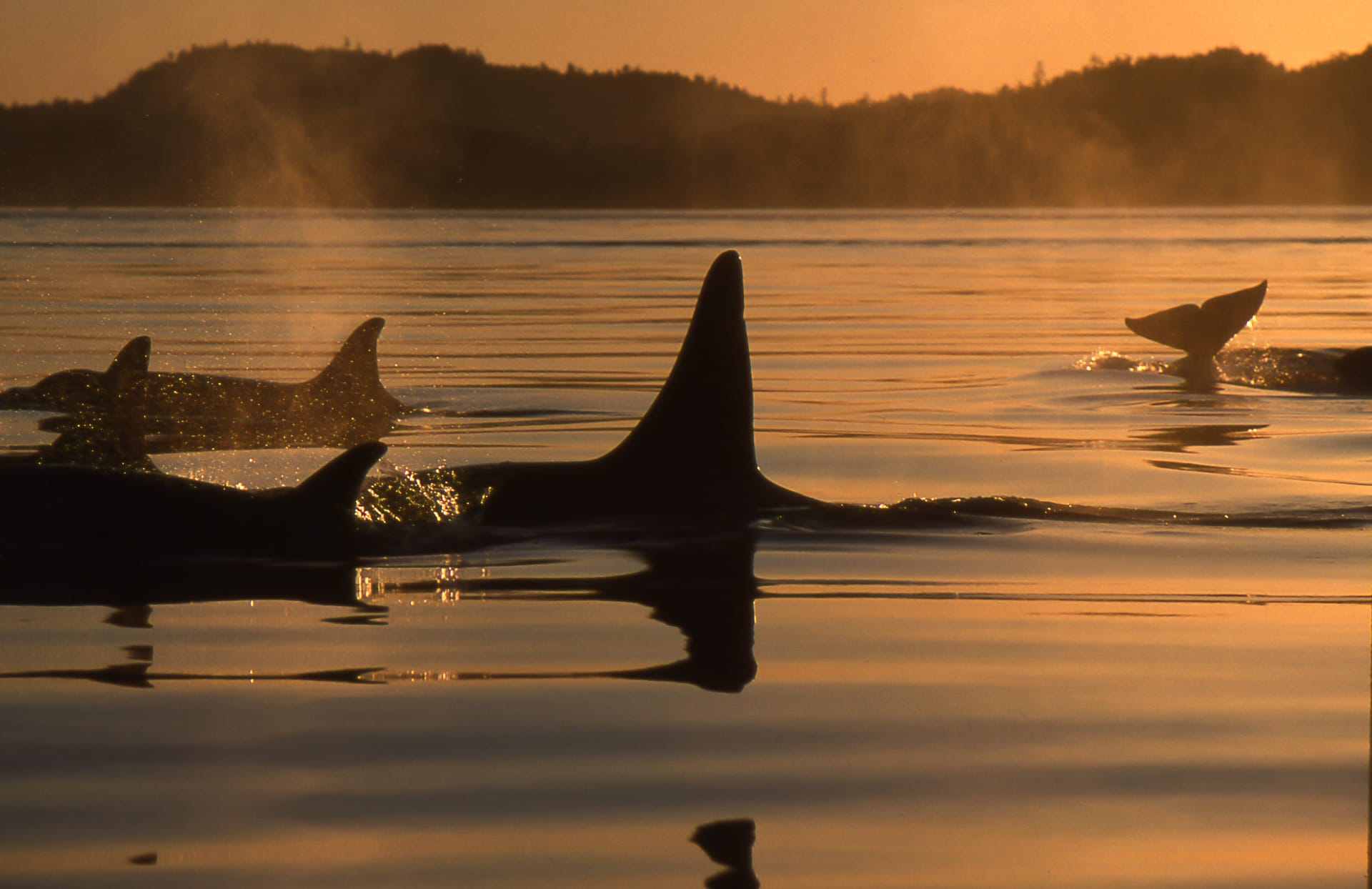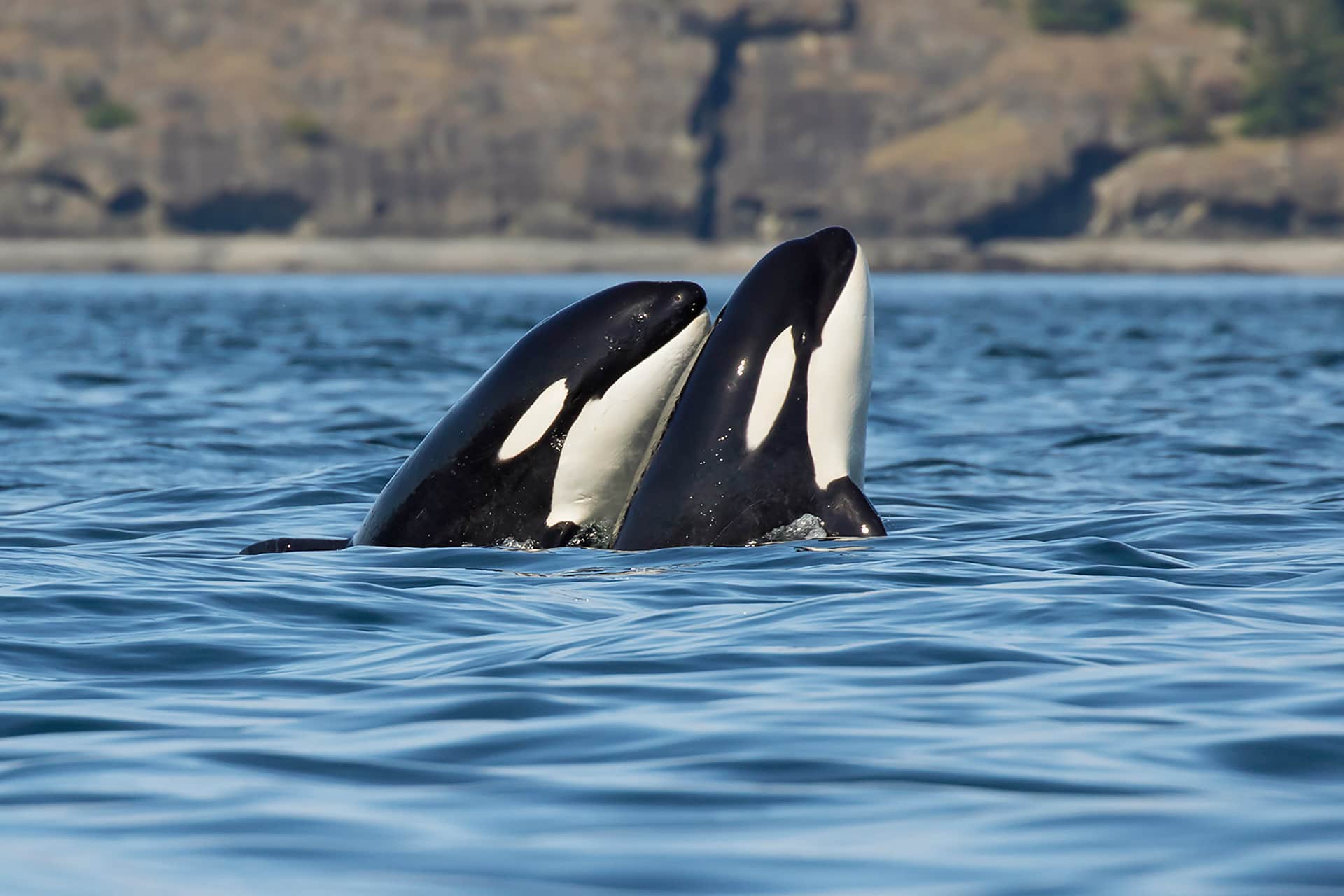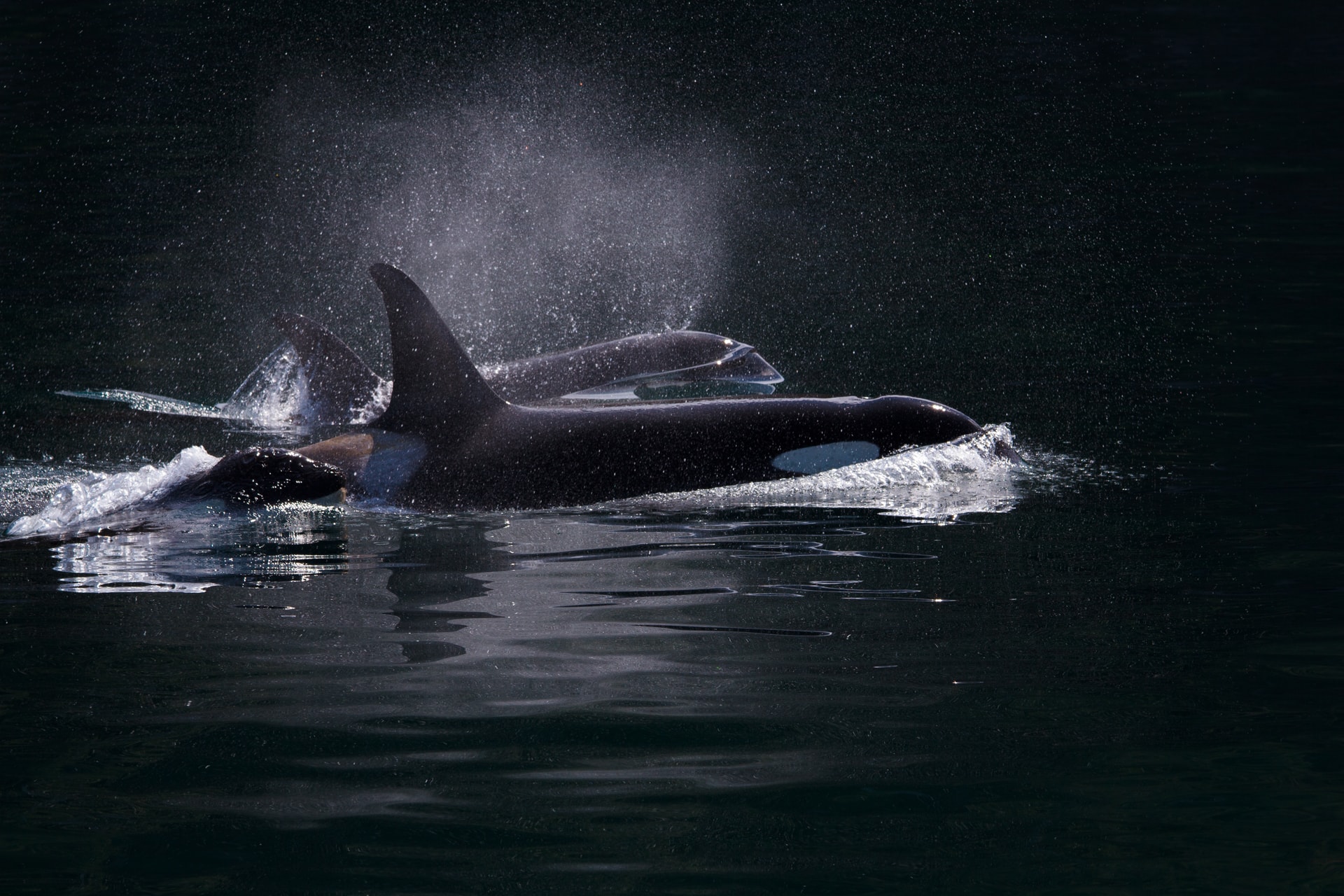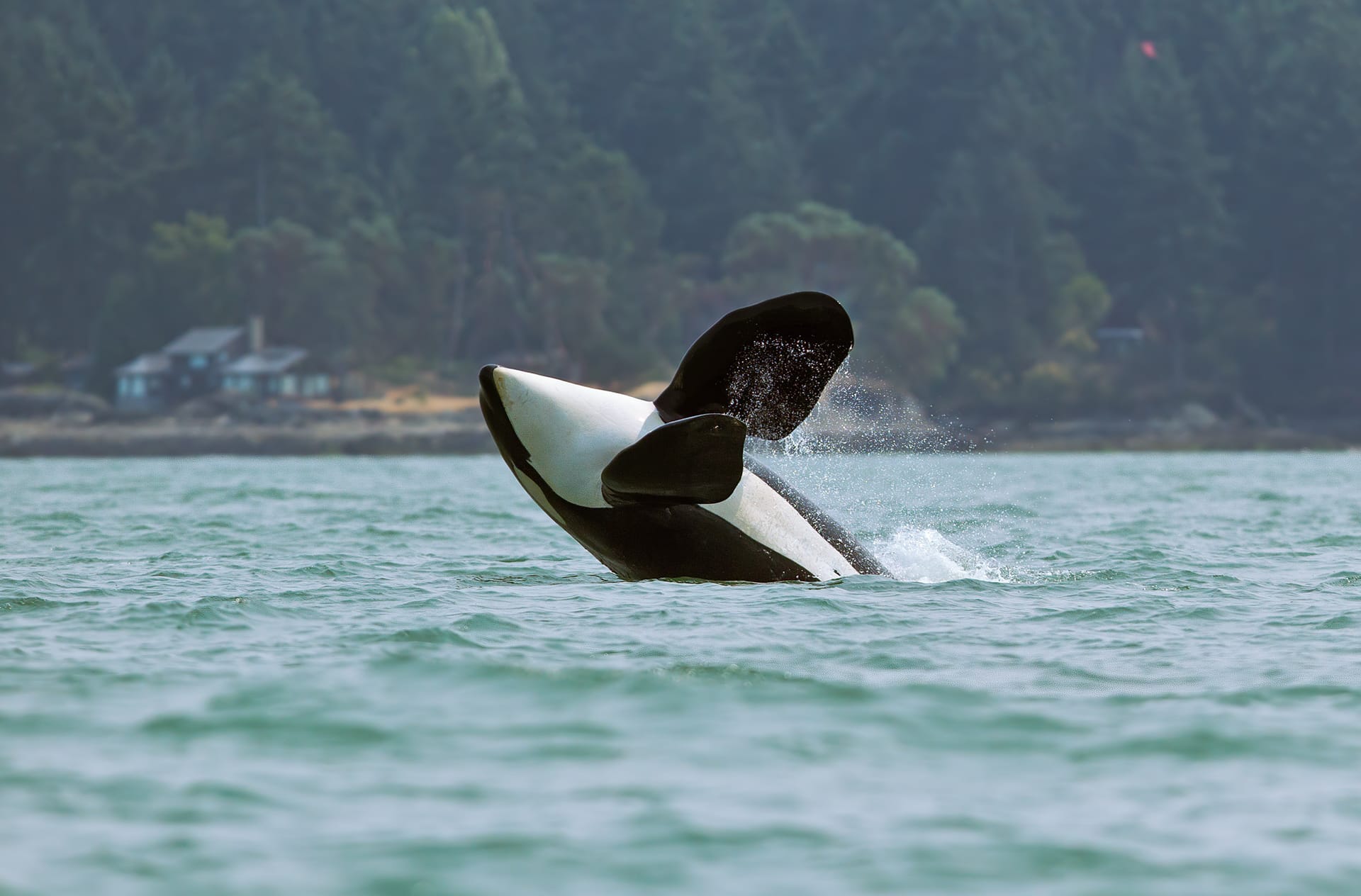
Killer whales (Orcinus orca) are found in every ocean on the planet. But perhaps the most well-known are the Southern Resident Killer Whales, aka J, K and L pod; treasured icons of the Pacific Northwest. Today, we’re in danger of losing this cherished population of killer whales who have fished these waters for salmon since time immemorial. People from all walks of life are working hard to save them; here’s why.
There are two distinct populations (ecotypes) of killer whales in this region known as the Salish Sea and they’re primarily distinguished by their menu. Southern Residents eat only fish, almost entirely salmon, while Bigg’s (aka Transient) killer whales feed on marine mammals. Southern Residents, due to their collaborative salmon-hunting techniques, travel in large family groups with grandmothers and grandchildren socializing and feeding together, in years of good health. Sadly, such behavior is becoming a thing of the past for this critically endangered population.
Due to increasing populations of seals and sea lions, the Bigg’s killer whales that hunt them are also increasing in number. It’s a different picture though for the Residents that eat salmon, as salmon populations have also drastically declined over the last few decades. Without sufficient food, calves are miscarried or fail to thrive, and young adult whales are dying far too soon.
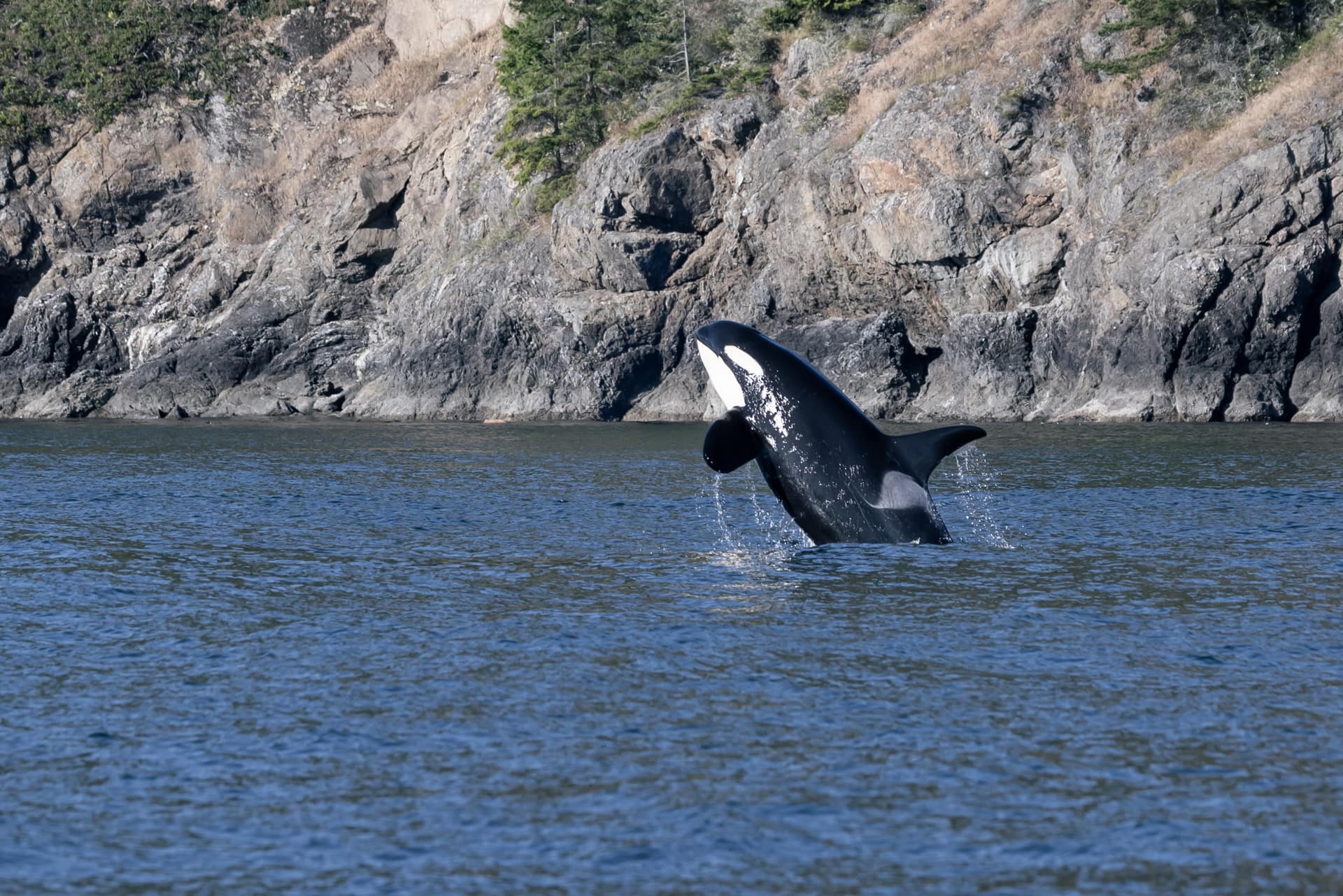
With over 40 years of research, it’s been possible to give each individual whale a scientific ID and common name and establish family trees for each pod. These families have their own cast of socialites and wallflowers, temperamental teenagers and wise elders. They’re a community with cultural heritage and oral tradition. Simply put, we humans and killer whales share much in common. This isn’t, however, the only reason to protect them. Like all top predators, they play a significant role in maintaining the health of the Salish Sea. Their salvation is directly linked with the ecosystems upon which we humans depend for food and leisure, the very places we call home. Due to our interconnectedness, we all have a responsibility to ask an important question: why are Southern Residents struggling to survive and thrive?
Threats
Facing Endangered Southern Resident Killer Whales
Chinook is King
Historically, Southern Residents visited the Salish Sea from April through September—this is how they came to be known as Resident. Arrival is timed to catch Chinook salmon making their way North to spawn in the Fraser River near Vancouver, Canada; and during this time, over 90% of their diet is Chinook. In fall and winter, they travel the Pacific Coast from BC, Canada to Oregon, sometimes even as far south as Monterey, California to search for salmon returning to rivers to spawn. Unfortunately, these salmon populations have also declined significantly both in overall number and size (weight). So now the whales have to work harder to find enough salmon to meet their needs–around 300-350 pounds per day, per whale! That’s a lot of salmon.
Danger in Dining
Not only is their food harder to find, it’s also contaminated with industrial toxicants—such as DDT and flame retardants— that finds its way into the marine environment and through the food chain and gets absorbed into their blubber. Levels are so high (enough to kill an adult human), that it impacts their immune system making them susceptible to infections and viruses that would not otherwise be fatal.
A Sea of Noise
Southern Residents are frequently surrounded by many different types of vessels, the most disruptive being large cargo ships and ferries, which affect vital activities such as using their inbuilt sonar system (echo location) to find food. As a highly social and emotionally intelligent animal, these whales have established a series of unique calls and whistles specific to their pod, and a series of shared calls to communicate with other Southern Resident pods. In a sea of noise, it’s hard to be heard, and to find your food.
Hope for Change
Despite these challenges, at Wild Orca we believe there’s hope. Protecting these iconic animals is part of a big picture – a shared picture. Whether you’re a fisherman or a software engineer, tribal or non-tribal, American or Canadian, the extinction of the Southern Residents will impact your world. The Pacific Northwest is a rich tapestry of beauty, cultural legacy, and charismatic wildlife. What message are we sending by allowing Southern Residents to vanish from that tapestry?
Wild Orca’s goal is secure a future for the Southern Residents and the Chinook salmon upon which they depend. This would help restore the Salish Sea ecosystem and protect the livelihoods of all those that depend upon it, and for all those who simply enjoy it.



